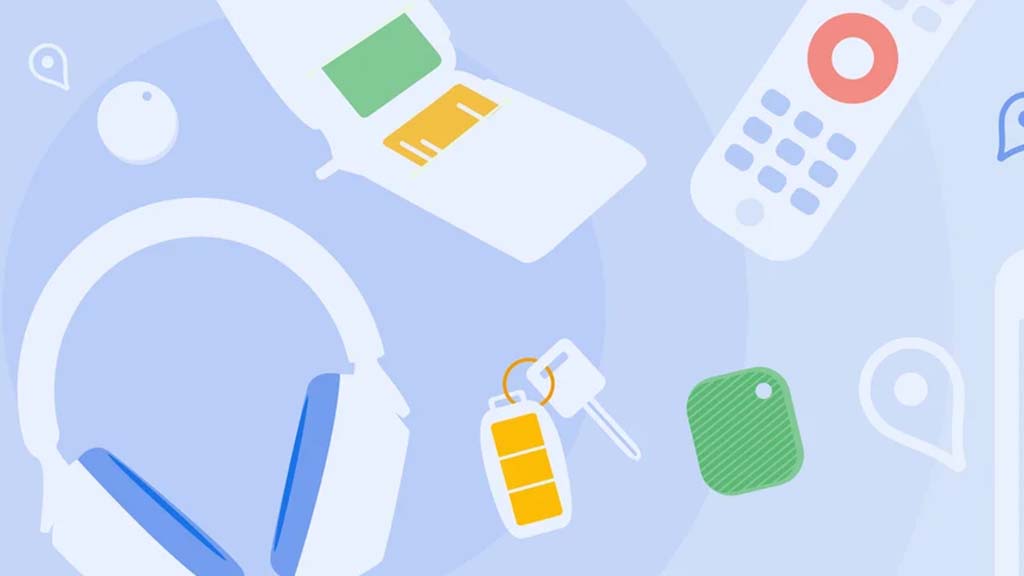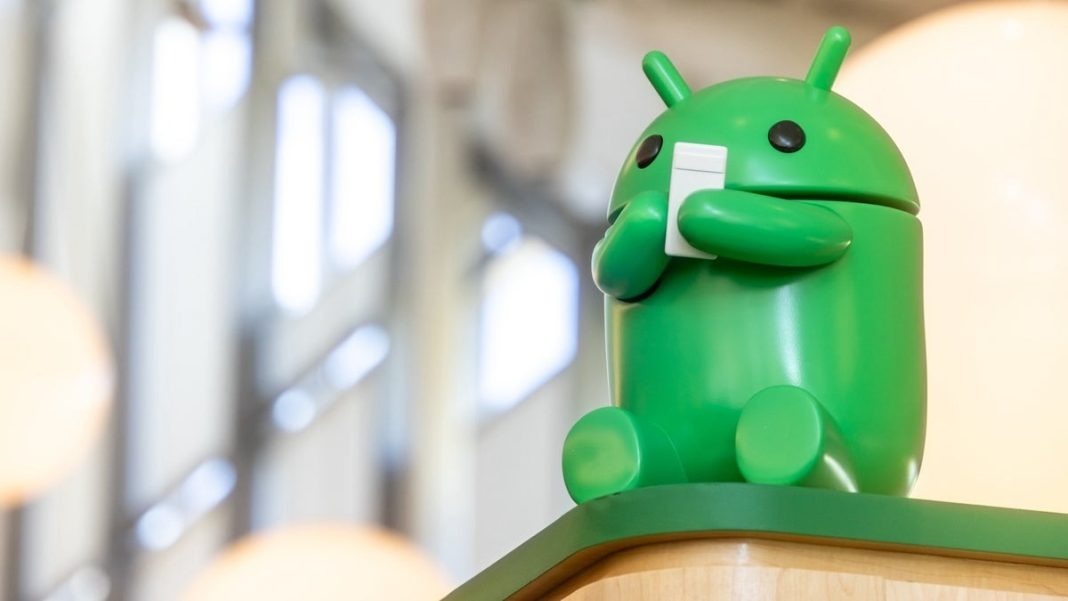Android
Google launches Find My Device network with offline tracking feature

As informed through email, Google has now released the Find My Device network for Android. It’s initially rolling out in the US and Canada, with more regions to follow gradually. Google says the Find My Device network would be expanded to select premium devices.
Android’s advanced Find My Device network is able to find devices even in the discharged state or not connected to the internet. As of the beginning, Google’s Pixel 8 and 8 Pro smartphones can be found even “if they’re powered off or the battery is dead.”
The new FMD network will use over a billion Android 9+ devices to find your lost items. Find My Device will initially find lost Android devices, with headphones coming soon after, while support for third-party Find My Device Bluetooth tags coming in May.
Google announced in its press release that it’s “working” with other Android OEMs and chipmakers on expanding this capability to premium devices. For the Pixel 8 series offline finding feature, Google credits “specialized Pixel hardware.”

Image: Google
Stay up-to-date on Google Pixel, Android & Tech Stuffs by following I M Judge on X/Twitter where you can also discover the latest news, polls, reviews, and new features for Google Apps, Pixel Phones, and the Android operating system.
Do you like this post? Kindly, let us know on X/Twitter: we love hearing your feedback! If you prefer using other social platforms besides X, do follow/join us on Facebook and Telegram.
Android
Android 15 QPR1 Beta 3.1 fixes key bugs for Pixel devices

Google has rolled out Android 15 QPR1 Beta 3.1, a final bug-fixing update before the official launch of QPR1 in December 2024. While many users have moved to Android 15 QPR2 Beta 1, this update ensures stability for those still using QPR1.
Key Highlights of QPR1 Beta 3.1
This “minor update” introduces critical fixes to enhance system performance and resolve persistent issues:
- Notification and Media Control Fixes
- A bug that caused the notification shade to close without launching the corresponding app when tapping media controls is resolved.
- The issue where long-pressing the device entry icon failed amidst overlapping notifications has also been fixed.
- Bluetooth and Audio Stability
- Volume control issues with certain Bluetooth devices are now resolved, enhancing audio device compatibility.
- Material You and Visual Improvements
- Wallpaper-based color selections under Material You now show better distinction, avoiding overly similar tones.
- Scrollbar inconsistencies in system settings are corrected for a more polished UI.
- NFC and Localization Enhancements
- NFC payment reliability has been improved.
- Translation issues in Indonesian and Hebrew for apps targeting Android 14 or lower have been fixed.
- General Stability and Accessibility
- Improvements cover system stability, camera functionality, and accessibility features.
Supported Devices and Installation Options
The update is compatible with Pixel devices from the Pixel 6 series to the latest Pixel 9 Pro Fold. It includes the November 2024 security patch. Most users can install the update via the Android Beta Program, with options to flash or sideload factory images for advanced setups.
This update paves the way for Android 15 QPR1’s stable release, ensuring a smoother experience for Pixel users. For those on the Beta Program, the new version will automatically download.
For more detailed installation guides and the full changelog, visit or the official factory image repository.
This update emphasizes Google’s commitment to refining Android 15 and service experience ahead of the December release.
Android
Google cancels Pixel Tablet 2 amid profit concerns and Android 16 aims to supercharge Gemini’s app control

Google Drops Pixel Tablet 2 Plans Over Profitability Issues
Google has reportedly decided to cancel the Pixel Tablet 2, originally slated for release in 2025, due to concerns about its financial viability. The original Pixel Tablet, launched in 2023, was expected to have a successor, with rumors even hinting at plans for a third-generation device (codenamed “Kiyomi”) targeted for 2027.
What Could Have Been: Pixel Tablet 2 Features
The Pixel Tablet 2 was in its early development phase. It was rumored to feature thinner bezels and a first-party keyboard cover with a built-in touchpad, offering enhanced functionality. A 5G variant was also reportedly in the works. However, internal evaluations suggested the product might struggle to achieve profitability, leading Google to halt the project.
Despite the setback, there is no indication that Google has entirely abandoned large-screen devices. Reports suggest that work on a Tensor G6-powered Pixel Tablet for 2027 might still be in progress. Owners of the current Pixel Tablet can rest assured that their devices will continue receiving software updates.
Android’s Commitment to Large Screens
Google remains invested in optimizing Android for large-screen devices, including tablets and foldables. Features like desktop-style windowing, expected to roll out in Android 15 QPR1 this December, signal ongoing development for better multitasking and productivity on bigger displays.
Additionally, Google’s rumored efforts to unify ChromeOS and Android could enhance large-screen support by enabling seamless desktop-level interactions on Android devices.
Android 16 and Gemini: The Future of App Control
Google is betting heavily on its AI-driven Gemini chatbot, aiming to integrate it deeply across its ecosystem. Currently, Gemini serves as the default assistant for many devices, but its ability to control Android apps has been limited. This could change significantly with the release of Android 16, which introduces a new framework designed to let services like Gemini perform tasks directly within apps.
Gemini Extensions and Their Limitations
At present, Gemini Extensions allow the AI to interact with external services like Google Maps, YouTube, and Google Workspace. These extensions pull data from backend APIs but don’t enable direct control over Android apps. For instance, Gemini can fetch flight details using Google Flights but cannot navigate or book flights directly within the app interface.
While extensions like “Utilities” offer basic control through predefined actions, they lack scalability. Many apps don’t provide public APIs, and relying on screen reading or accessibility inputs would result in inconsistent performance.
Android 16’s Game-Changing API: “App Functions”
Android 16 addresses these challenges with a new feature called “app functions.” According to Google’s developer documentation, app functions are specific pieces of functionality that apps expose to the system. For example, a food delivery app might create an app function labeled “orderFood,” which Gemini could use to initiate an order.
This functionality works by defining app-specific services accessible only to system-level processes. Permissions like EXECUTE_APP_FUNCTIONS and EXECUTE_APP_FUNCTIONS_TRUSTED regulate access, ensuring security and reliability. While these permissions are currently limited to system apps like the Google App and Android System Intelligence, they allow AI systems like Gemini to perform actions inside third-party apps.
A Leap Beyond Google Assistant
The app functions framework could enable Gemini to achieve what Google Assistant never fully managed: seamless multitasking across apps. Imagine using natural language to control apps, schedule tasks, or complete complex workflows. For example, users might book a hotel, order food, or respond to messages—all through voice commands or conversational inputs.
This vision aligns with Google’s 2019 promise of a “new Google Assistant” capable of orchestrating tasks across multiple apps. Android 16’s innovations could finally make this vision a reality, transforming Gemini into a versatile AI agent for Android devices.
Challenges and Adoption
The success of this system will depend heavily on developer adoption. App developers will need to implement app functions to unlock Gemini’s full potential. If widely embraced, this feature could redefine how users interact with Android apps, making AI-driven multitasking and app control a central part of the Android experience.
Conclusion
While the cancellation of the Pixel Tablet 2 marks a step back for Google’s hardware ambitions, the advancements in Android 16 signal exciting possibilities for the future. By empowering Gemini with robust app control capabilities, Google is paving the way for smarter, more intuitive interactions with Android devices. The coming years could see AI becoming an indispensable part of how we use smartphones and tablets.
Android
Google Phone app enhances scam call reporting and new Chromecast update rolled out

The Google Phone app is steadily becoming more user-friendly, especially when dealing with spam and scam calls. In a recent update, Google has introduced and is refining features to empower users to report fraudulent calls more effectively. Meanwhile, a fresh update for the Chromecast with Google TV has begun rolling out, keeping the device optimized as Google preps for larger changes.
Google Phone App: Smarter Tools for Scam Reporting
The Google Phone app has long been a reliable tool for blocking unwanted calls, but it’s taking scam call reporting to the next level. Users can already block or report spam calls directly from the call log by long-pressing an entry and selecting “Block or report.” From there, you can classify the call as either spam or scam and choose whether to block the number. However, this process currently sends minimal context to Google.
An upcoming update is set to introduce a detailed feedback mechanism. Version 155.0.697690833-publicbeta of the app hints at a future feature where users can provide additional insights about scam calls. This update may include:
Enhanced Reporting Options
When reporting a call as a scam, users might see a multi-select menu with questions like:
- What did the scammer ask for?
- Personal information (e.g., full name)
- Passwords
- Electronic payments
- App downloads
- “Not applicable” or “Something else” (with a text entry option)
- What did the scammer pretend to be?
- Government agencies (e.g., FBI, IRS, Social Security Administration)
- Friends or acquaintances
- Law enforcement (e.g., police)
- “Not applicable” or “Something else” (allowing for further details)
This information will be reviewed by Google and could potentially be used to warn other users about known scam numbers or their tactics.
Lookup Button Gets Better Placement
The update also tweaks the Lookup button, which helps identify unknown numbers. While this button has existed in the app, it is now visible within the Google Contacts app when accessed through the Phone app. A banner labeled “Contact info from Phone” further clarifies the context.
Although these features are still in development and not yet available for public use, they highlight Google’s ongoing efforts to combat spam and scam calls.
Chromecast with Google TV: Latest Update Rolling Out
Google is also rolling out a new update for the Chromecast with Google TV, continuing its commitment to improving performance and security.
Update Details
- Version: STTL.240812.006.N1 (upgraded from STTL.240812.006)
- Size: 59.48 MB (smaller than October’s 83.01 MB patch)
- Patch Level: September 2024 (still based on Android 12)
- Changes: General bug fixes and performance improvements.
This marks the eighth update for Chromecast with Google TV in 2023, following monthly patches since February. While these incremental updates focus on stability, they pave the way for a bigger milestone: Android 14.
What’s Next for Chromecast?
The Android 14 update is expected to bring a significant feature called “Home runtime”, enabling Chromecast devices to function as hubs for Matter smart home devices. Google has until the end of the year to roll out this transformative upgrade, and this recent patch could be preparing the device for the transition.
How to Update Your Chromecast
To ensure you have the latest version:
- Navigate to Settings on your Chromecast with Google TV.
- Go to System > About > System update.
- Follow the prompts to install the update.
Conclusion
Google’s latest improvements for the Phone app and Chromecast with Google TV showcase its focus on user experience and security. With smarter scam call reporting on the horizon and updates ensuring devices stay optimized, Google continues to lead in enhancing everyday tech. Stay tuned as these features and updates roll out to users worldwide!
-

 Apps9 months ago
Apps9 months agoGboard Proofread feature will support selected text
-

 News9 months ago
News9 months agoSamsung USA crafting One UI 6.1.1
-

 News8 months ago
News8 months agoBreaking: Samsung Galaxy S22 may get Galaxy AI features
-

 News8 months ago
News8 months agoSamsung Galaxy S23 Ultra with One UI 6.1 and all S24 AI features revealed
-

 News9 months ago
News9 months agoOne UI 6.1 Auracast (Bluetooth LE Audio) feature coming to many Samsung phones
-

 News9 months ago
News9 months agoSatellite SOS feature coming to Google Pixel phones, evidence leaked
-

 Apps6 months ago
Apps6 months agoGoogle’s fancy new Weather app is finally available for more Android phones
-

 News9 months ago
News9 months agoGoogle Pixel evolves as Europe’s third best selling flagship




